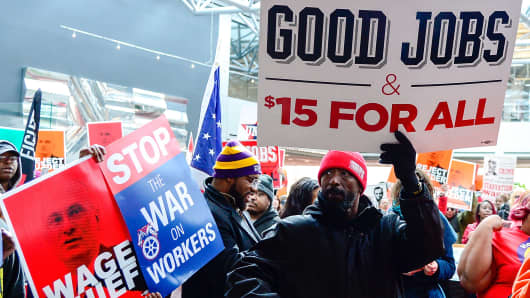More than eight years removed from the depths of the Great Recession, the U.S. economy seems to be firing on all cylinders. Monthly jobs gains have averaged 200,000 over the past year, and the unemployment rate remains low at 4 percent. Yet, every month when the latest employment data is released, there’s one vexing issue: wages.
Despite a tightening labor market, wage growth has been stagnant. Wages are growing at an annual rate of 2.7 percent, which seems encouraging until you consider that the inflation rate is 2.9 percent. That’s why far too many Americans feel like they’re treading water. Their paychecks are unchanged, while everyday costs like housing, health care and gas have gone up.
But there’s an easy way to improve the lives of millions of Americans: raise the federal minimum wage.
This week marks the ninth anniversary of the last time the federal minimum wage was raised on July 24, 2009. It currently stands at $7.25 an hour. Since this federal standard was first enacted in 1938, it’s been raised 28 times under both Democratic and Republican presidents.
When I served as President Obama’s Deputy Secretary of Labor, my office displayed a government poster from 1950, when the minimum wage was lifted to 75 cents an hour under by President Truman. While that figure seems remarkably low by modern standards, 75 cents went a lot further in 1950 than $7.25 does today. In fact, the buying power of the federal minimum wage is well below its peak in the late 1960s.
At the current federal level, a full-time worker would earn just $15,080 a year. The negative results of low wages include declining living standards, growing income inequality, poorer health outcomes, greater reliance on government assistance, and reduced consumer spending.


